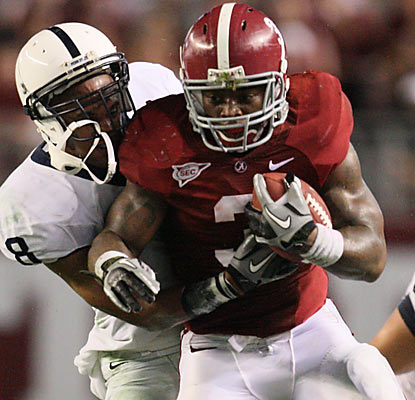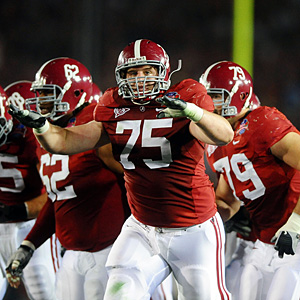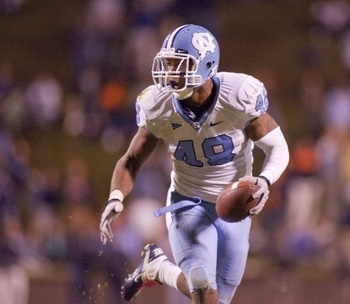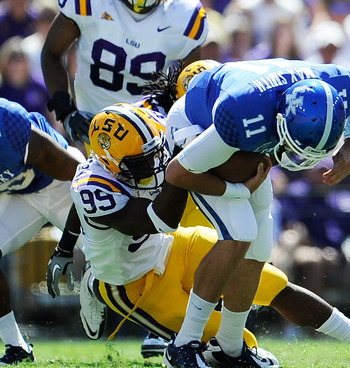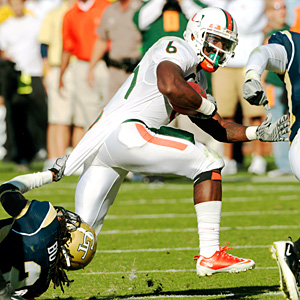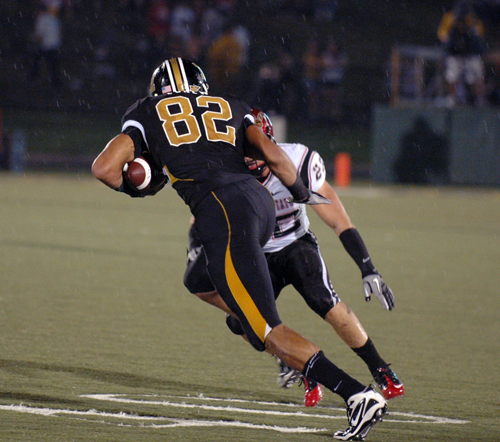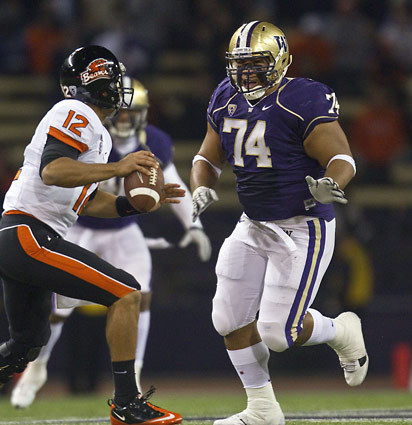Yesterday I wrote a piece contemplating a scenario where Robert Griffin III was within reach for the Seahawks. Although many people expect Griffin to be drafted in the top-five, we looked at situations that could make it possible for Seattle to initiate a modest trade up the board – possibly with Carolina at #8 – to draft their quarterback. Today I wanted to highlight Griffin’s most recent (and likely final) appearance for Baylor, a 67-56 shoot-out against Washington.
There’s an awful lot to like about Griffin and the most attractive quality is the giant leap he made in 2012 to become a legitimate pro-prospect. He’s made tangible progress every year as a starter, evetually winning the Heisman for his efforts in 2011. Aside from a high level of athletic talent, Griffin has clearly worked on his craft and become a much more accomplished passer. He’s currently enjoying the kind of hype that helps a draft prospect almost as much as the tape. Fans want Griffin on their team, executives know he’ll not only sell tickets but also a lot of other merchandise. He has a very marketable nickname in ‘RG3’ and companies will want to be associated with the team that owns such an asset.
It’s going to be very easy to look beyond any negative issues. Yet, as with every young quarterback, they exist within Griffin’s game. The positives are obvious and contained within two plays in the tape above (provided by JMPasq). At 0:12 you can see the way he runs right on the edge of his own end zone, then delivering a wonderful pass with top-end arm strength and accuracy to beat two defensive backs. He’s made eye-catching plays like that all season. At 2:57, we see his running ability and that elusive quality to avoid tackles and break off a big play for a touchdown. He’ll do that at the next level and it’ll offer a different dimension to an offense. It’s also, potentially, at the heart of one of Griffin’s issues.
You’ll see several examples in the tape where he gets happy feet. At times he was bailing on passes too early after one read and trying to make similar highlight-reel plays on the ground. For the most part this season I’ve found his footwork on drop backs to be a bigger problem than anxiety in the pocket, but this is something teams will have to study. Griffin is going to need to learn a pro-drop back (nothing new for a college quarterback), he’s going to have to take less steps in order to set and throw. Teams might also need to work out if they’re drafting a player who will stay patient and scan the field, allowing for plays to develop. I want to see improvisation from a young quarterback and Griffin provides it, but he’s also going to need to pick his moments.
In fairness, Baylor also seemed to shift their game plan towards a lot of run-option and screen passes against Washington – similar to what we saw in previous seasons with RG3 at quarterback. It’s always difficult to be too judgemental in bowl games such as this with a lot of points scored and not a great deal at stake. No doubt the games against Oklahoma and Texas will provide greater points of focus for scouts in the off season, where we didn’t see quite as much of an issue with Griffin getting happy feet. It may be that he simply believed he could score at will against a bad Huskies defense and tried too hard. Even so, this wasn’t his best game whatever the reasoning – and it does highlight that while there are a lot of extreme positives to Griffin’s game, he’s not flawless.
Decision time for underclassmen
Despite previously announcing he’d stay at Rutgers, Mohamed Sanu has today revealed he will turn pro. He’s a big, sure-handed receiver with the potential to line-up all over the field. He’s not got elite downfield speed and he’ll need work on his route running, but there’s a lot of playmaking potential. Whitney Mercilus (DE, Illinois) is also turning pro after a 14.5 sack season that led the NCAA. He’s not a brilliant physical talent with elite edge speed or dominating strength, but his production will interest teams. Personally, I think he’s best suited to playing in space because he’s not the biggest player. I’m not convinced he’s a player the Seahawks will look at as early as #11 or #12.
Stanford trio Andrew Luck, Jonathan Martin and David DeCastro are all turning pro as expected, as is Arizona State linebacker Vontaze Burfict. Luck will go first overall while Martin’s stock could be inflated with a good combine performance and the sheer need for offensive lineman at the top of round one. Right guard DeCastro is slightly over rated and he’s not quite as dominant as people will have you believe. He’s a great technician and does an excellent job pulling and working on the move. He initiates holes in the run game with great hand placement and positioning. However, he’s not got elite size or strength at the point of attack and his pass-protection can be hit and miss. He’s also a little too keen to get to the second level sometimes.
Tomorrow I’ll be publishing an updated mock draft with the Seahawks picking 11th overall. Of course, in reality they need to win a coin-toss to leap frog Kansas City – but I thought I’d give the edge to Seattle for now. I’ll also be breaking down Ryan Tannehill’s performance against Northwestern and we’ll have game-tape of Chandler Jones – a defensive end from Syracuse with mid-round potential for the Seahawks.







